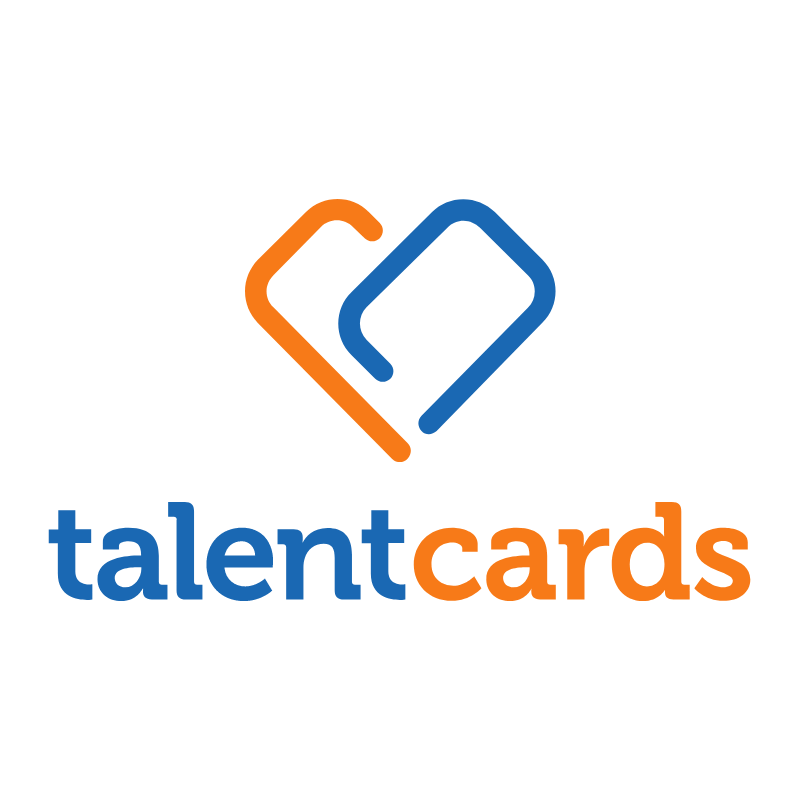Yes, most microlearning software solutions are built to work across numerous devices and platforms. This implies that customers can use the software on their desktops, laptops, tablets, and smartphones, regardless of operating system. This offers a smooth learning experience and allows users to access training materials while on the go, making it both easy and efficient. Furthermore, this allows firms to offer software to their staff without worrying about compatibility difficulties.
List of 20 Best Micro Learning Software
Tenneo LMS is a learning solution designed for both administrators and learners. Our advanced platform offers four versions - Learn, Learn +, Grow, and Act - to cater to your organizations unique learning needs. With a speedy setup process of just 8...Read More Tenneo LMS
Grovo is a learning platform designed to help businesses optimize their hiring process and reduce labor expenses. With our platform, organizations can easily onboard new employees and provide them with essential skills and motivation to boost their p...Read More Grovo
Whatfix - an efficient and intuitive software designed to streamline customer support. From managing emails, chats, and social media interactions, Whatfix simplifies the entire support process. It promptly adapts to evolving customer demands, ensurin...Read More Whatfix
HandyTrain - the leading B2B SaaS Mobile Training Platform. With its advanced features, enterprises can effortlessly create, publish, and deploy training content for their geographically dispersed workforce. Our comprehensive Training Suite makes tra...Read More HandyTrain Mobile Training Platform
Courseplay is a software designed to revolutionize employee development. By harnessing the power of AI, Courseplay offers a complete learning journey that includes on-the-job learning, social interaction and formal training within the workplace. Our...Read More Courseplay
TalentCards is a app for mobile learning and communication designed for deskless workers. From online teams to frontline and production line workers, this user-friendly app provides instant access to vital information anytime, anywhere. Say goodbye t...Read More TalentCards
Oust - an innovative software that optimizes business processes and boosts efficiency. By automating routine tasks and integrating multiple systems, Oust simplifies daily operations for contemporary companies. With its real-time analytics and effecti...Read More Oust
Watch and Learn is a blended learning solution that seamlessly combines live classrooms, collaborative learning, and coaching. This innovative platform offers an interactive and personalized educational experience for both individuals and organizatio...Read More Watch and Learn
ConveYour is a platform specifically created for field sales teams to aid in their growth and success. Our platform offers powerful tools that simplify the process of recruiting, onboarding, training, and retaining top talent in the industry. Join ou...Read More ConveYour
KnowledgeFox is a eLearning software that revolutionizes training by providing tailored and powerful learning experiences. Its sophisticated features and smart algorithms seamlessly integrate with existing systems, offering mobile MicroLearning for s...Read More KnowledgeFox
Axonify is a leading frontline workforce enablement platform that leverages the power of AI to enhance learning and communication. Our advanced reinforcement and spaced repetition training techniques keep employees engaged, informed, and productive,...Read More Axonify
Gurucan is a online platform that streamlines the creation, marketing, and selling of digital courses for individuals and businesses. Its user-friendly interface and comprehensive features make it the top choice for knowledge commerce enterprises. El...Read More Gurucan
Calibr is a Learning Management System and Learning Experience Platform for businesses of all sizes. With its sleek and modern design, Calibr transforms the management and delivery of internal and external learning programs. Streamline your training...Read More Calibr
Brainscape is a online platform and mobile app that revolutionizes the learning process. Utilizing spaced repetition and flashcard techniques, Brainscape offers a personalized and efficient way to master various subjects and skills. Its adaptive lear...Read More Brainscape
isEazy Engage - an innovative training solution that combines microcontent, social features, collaboration, and gamification to grab the interest of your team. Encourage on-the-go learning and boost engagement, completion, and knowledge retention in...Read More isEazy Engage
iSpring Learn is a learning management system for corporate training. With its comprehensive authoring toolkit, creating eLearning courses has never been easier. Simply upload your training materials and invite your employees to begin learning. Monit...Read More iSpring Learn
iSpring Page is acloud-based authoring tool designed to create interactive microlearning courses. With its user-friendly interface, you can effortlessly produce mobile-responsive content and collaborate seamlessly with other authors in real-time. Say...Read More iSpring Page
Efectio is a dynamic platform created to elevate employee training, engagement, and team dynamics. By incorporating various elements such as microlearning assignments, gamification elements, and a tangible reward system, Efectio drives motivation and...Read More Efectio
Auzmor Learn is a dynamic learning management software that simplifies employee training for organizations. With Auzmor Learn, managing training programs on any device becomes effortless. This robust solution streamlines the training process, allowin...Read More Auzmor
Learn More About Micro Learning Software
- What Is Micro Learning Software?
- What Are The Recent Trends In Micro Learning Software?
- Benefits Of Using Micro Learning Software
- Important Factors To Consider While Purchasing Micro Learning Software?
- What Are The Key Features To Look For In Micro Learning Software?
- Why Do Businesses Need Micro Learning Software?
- How Much Time Is Required To Implement Micro Learning Software?
- What Is The Level Of Customization Available In Micro Learning Software?
- Which Industries Can Benefit The Most From Micro Learning Software?
- Conclusion
What Is Micro Learning Software?
Micro learning software is a cutting-edge training system that enables bite-sized learning and delivers little pieces of knowledge to users. It allows students to participate in brief and targeted courses, often lasting 1-5 minutes, to learn new skills or reinforce existing knowledge. This type of learning is particularly useful for busy professionals who have limited time but want to improve their abilities and stay current in their sector.
One of the most important features of micro learning software is its accessibility, since it can be accessed on a variety of devices such as laptops, smartphones, and tablets, making it an ideal alternative for on-the-go learning. Additionally, the knowledge can be provided in a variety of formats, including videos, quizzes, games, and interactive simulations, to accommodate different learning styles.
Another advantage of micro learning software is its individualized approach, which allows students to select the topics and modules that are most relevant to their learning objectives. This not only boosts engagement, but it also ensures that individuals receive tailored and relevant training. Furthermore, the program monitors and records each learner's progress, making it easier for employers to detect knowledge gaps and tailor training accordingly.
Micro learning software is also a cost-effective alternative for businesses, as it eliminates the need for expensive and time-consuming traditional training techniques. Employees can take quick breaks from their work to learn and upskill using simply available, short modules that do not disrupt their everyday responsibilities. In addition to individual skill development, micro learning software fosters a continual learning culture throughout enterprises.
The consistent distribution of little morsels of information not only makes learning more doable, but it also encourages students to incorporate learning into their daily routines. When choosing microlearning software, look for features like mobile accessibility, tailored material, gamification, and tracking and reporting tools. Finally, investing in a dependable and effective microlearning program can boost employee productivity, engagement, and overall company performance.
What Are The Recent Trends In Micro Learning Software?
In recent years, microlearning has evolved as a popular and effective approach for delivering bite-sized and highly focused information to learners. The demand for micro learning software has grown dramatically as remote work and the necessity for continual learning have become more prevalent.
These are the latest trends in microlearning software and how they might help your company.
1. Mobile Compatibility: As the bulk of the workforce now uses mobile devices, microlearning software has become more accessible and convenient. As a result, numerous software companies have created mobile-responsive and app-based solutions to suit the increasing demand.
2. Gamification: Gamification has been a prominent trend in the e-learning business, and it has found its way into micro learning software as well. Gamification components such as points, levels, and leaderboards encourage learners to engage with the subject and remember information more effectively.
3. Personalization: Microlearning software that offers tailored learning paths and adaptive material delivery is gaining popularity. Using data and analytics, these software solutions may supply learners with individualized information depending on their knowledge gaps and learning preferences.
4. Augmented Reality (AR) And Virtual Reality (VR): Microlearning software incorporates AR and VR technologies to provide interactive and immersive learning experiences. This tendency is especially effective in industries that require hands-on training, such as healthcare and manufacturing.
5. Artificial Intelligence (AI): AI-powered microlearning software may tailor information, provide real-time feedback, and even forecast future learning requirements. AI allows learners to receive individualized recommendations based on their performance and progress, making the learning process more efficient.
6. Micro credentials: Many firms are now recognizing the need of microlearning for staff upskilling and reskilling. As a result, microlearning software with the ability to award microcredentials is gaining popularity. These certifications are easily shareable on professional forums such as LinkedIn to demonstrate new talents.
Keeping up with the newest innovations in microlearning software is critical to ensuring that your firm remains competitive in the ever-changing learning landscape. With mobile compatibility, gamification, customization, AR/VR, AI, and micro credentials becoming the norm, it is critical to select a software solution that addresses these trends while also meeting your organization's unique learning requirements.
Benefits Of Using Micro Learning Software
Micro Learning Software is a rapidly rising area in the eLearning business, with an increasing number of firms implementing this method to training and development. This software provides several benefits to both students and corporations, making it a worthwhile investment for any firm.
We will look at the advantages of utilizing Micro Learning Software and why it should be on your radar.
1. Flexible And Bite-Sized Learning: The main advantage of Micro Learning Software is its capacity to offer small and focused bursts of knowledge, or "micro lessons." This makes learning more flexible and easy for students because they can access it whenever, wherever, and on any device. Furthermore, the bite-sized style of the content allows learners to assimilate information quickly and efficiently, enhancing retention and enthusiasm to learn.
2. Cost And Time-Efficient: Micro Learning Software is an economical and time-saving solution for enterprises. Because the material is divided down into smaller modules, it takes less time to build, which reduces development expenses. Furthermore, learners can complete the course in less time, allowing them to focus on other duties. This makes it an excellent choice for firms with limited training budgets and hectic schedules.
3. Increased Engagement And Retention: Traditional training approaches are more formal and passive, which leads to lower learner engagement and retention rates. Micro Learning Software, on the other hand, includes interactive and multimedia aspects to make the learning experience more engaging and pleasurable for students. As a result, retention rates improve and the training program becomes more successful.
4. Personalized Learning: Micro Learning Software provides learners with a personalized learning experience based on their particular requirements and preferences. Learners can select which courses to focus on based on their current ability level, making the learning process more relevant and effective. This also enables firms to target specific skill shortages, resulting in a more customized and effective training program.
5. Easy To Track Progress And Measure Outcomes: Another key advantage of adopting Micro Learning Software is the ability to track learners' progress and evaluate the effectiveness of the training program. The platform provides thorough analytics and reports, allowing businesses to gain useful insights into learners' performance and identify areas for development. This enables firms to continuously enhance and refine their training programs for optimal impact.
Important Factors To Consider While Purchasing Micro Learning Software?
When it comes to choosing microlearning software, there are numerous important elements to consider to ensure you make the best option for your company. Microlearning software has grown in popularity in recent years due to its capacity to provide bite-sized, interactive training content that can be accessed at any time and from any location.
To help inform your purchasing selection, keep the following elements in mind:
1. Learning Needs: The first stage is to determine your organization's specific learning requirements. Understanding your employees' abilities and expertise can help you determine which features and functionalities are required in microlearning software. Consider the types of material you wish to give, the required amount of engagement, and your training's target audience.
2. User Interface: A user-friendly interface is essential for the effective adoption of microlearning software. Even non-technical users should find the UI intuitive and easy to navigate. Look for demos or free trials to test the user interface and ensure it suits your organization's needs.
3. Material Options: Microlearning software provides a number of interactive material types, including videos, quizzes, games, and simulations. To keep training exciting and successful, use a platform that provides a variety of content possibilities. Consider the flexibility and customization choices available for developing content that meets your organization's training objectives.
4. Accessibility: One of the primary advantages of microlearning is its accessibility, which allows employees to access training from any device, at any time. Make sure the software you chose is compatible with several devices and provides offline access, as this will make training more accessible to your staff.
5. Analytics And Reporting: Tracking learner progress and performance is critical for determining the effectiveness of any microlearning program. Look for software that includes detailed analytics and reporting tools, including as completion rates, quiz scores, and time spent on each module. These insights will assist you in identifying knowledge gaps and making required changes to your training program.
6. Integration: Determine whether the micro learning software can be seamlessly integrated with your current learning management system (LMS) or other software utilized by your firm. This will save you time and resources when it comes to managing and tracking employee training.
7. Customer Support: Technical issues or training questions may arise while using the product. Ensure that the vendor provides enough customer support, such as a helpdesk, email, or chat support, to address any concerns that may emerge. By taking these variables into account, you can make an informed decision about choosing micro learning software that matches your organization's specific requirements. Remember to conduct extensive research and comparisons before making a selection to ensure long-term success and engagement with your microlearning program.
What Are The Key Features To Look For In Micro Learning Software?
When considering microlearning software for your firm, there are numerous critical characteristics to consider to guarantee you get the right solution for your requirements.
These features include the following:
1. User-Friendly Interface: The microlearning software should have a simple and straightforward interface that allows employees to easily navigate and obtain learning materials.
2. Mobile Compatibility: In today's fast-paced business environment, it is critical for employees to have access to learning materials via mobile devices. Look for microlearning software that works with both iOS and Android devices.
3. Bite-Sized Content: The entire purpose of microlearning is to provide bite-sized, easily digestible content. Look for software that provides brief, concise lectures, movies, or tests that can be finished in a few minutes.
4. Personalization Options: Every employee has a unique learning style and preferences. Look for software that allows you to personalize your learning experience, such as choosing your own learning route or customizing content depending on your employment role or hobbies.
5. Multimedia Support: In order to keep employees engaged and motivated, microlearning software should offer a wide range of multimedia content, including videos, photos, and interactive elements.
6. Tracking And Analytics: It is critical to monitor the effectiveness and progress of your employees' training. Look for software with strong tracking and analytics capabilities, such as completion rates, time spent on lessons, and performance metrics.
7. Gamification: Gamification elements such as points, levels, and prizes can provide a fun and competitive element to microlearning, increasing employee engagement.
8. Social Learning Capabilities: Microlearning software should include social learning elements like discussion forums and peer-to-peer feedback to encourage employee knowledge sharing and cooperation.
9. Integrate With Your Current Systems: To ensure a consistent learning experience, search for software that interfaces with your current learning management system or HR software. By taking these essential qualities into account, you can locate micro learning software that meets your organization's needs while also allowing your staff to learn and develop consistently.
Why Do Businesses Need Micro Learning Software?
In today's fast-paced business environment, staying ahead of the competition is critical. This necessitates regularly updating and increasing personnel skills and expertise. However, traditional training approaches can be time-consuming and may fail to adequately address employees' particular learning needs. This is where micro-learning software comes in.
Microlearning software is a strong tool that allows employees to receive brief, focused learning spurts. It uses bite-sized content, such as films, quizzes, and interactive games, to provide knowledge in an engaging and digestible style. This saves time for busy personnel while also improving information retention and application. One of the most significant benefits of micro learning software is its ability to meet the unique needs and learning styles of employees. It enables users to access and review certain topics on their own time and speed, making the learning experience more personalized and effective.
Furthermore, with the increase of remote and virtual work, microlearning software provides a quick and adaptable alternative for educating personnel regardless of location. It can be viewed from any internet-connected device, making it ideal for remote teams and mobile personnel. Businesses must continually adapt and evolve in response to technological advancements. Micro learning software enables organizations to swiftly update and share new information and skills with their staff, keeping them competitive in the market.
How Much Time Is Required To Implement Micro Learning Software?
When contemplating deploying microlearning software, it is critical to understand the time commitment required. Unlike traditional training methods, micro learning software enables a more adaptable and efficient approach through shorter, bite-sized sessions. As a result, the time necessary for implementation will vary depending on your organization's specific needs and goals.
The first implementation of micro learning software can take anywhere from a few weeks to several months, depending on the program's size and complexity. This covers the time required to install the software, add content, and personalize it to reflect your organization's logo and culture. One of the primary benefits of microlearning software is its ease of use and user-friendly interface.
This implies that training administrators and content providers may quickly learn and adapt to the platform, which saves time and costs on training and onboarding. Another element that can influence installation time is the degree of integration with your existing systems. Microlearning software can be connected with your learning management system (LMS) or other HR software to streamline training and save time for both administrators and learners. In terms of continuous maintenance, microlearning software is intended to be easily updated and refreshed.
This implies that once the first implementation is complete, the time required for continuing maintenance is minimal, allowing your company to concentrate on providing high-quality training material. Overall, the time necessary to adopt micro learning software is heavily dependent on your organization's requirements and readiness. However, because to its user-friendly interface and ability to expedite training, micro learning software can save time and costs in the long term, making it a worthwhile investment for any organization trying to improve its training and development efforts.
What Is The Level Of Customization Available In Micro Learning Software?
Micro learning software provides a diverse set of features and capabilities for creating personalised and successful training experiences for learners. One of the most essential factors for consumers is the level of customization possible in microlearning software. Customization enables firms to personalize training programs to their employees' specific requirements and goals. The extent of customisation in microlearning software varies by platform. Some software allows for minimal customisation, like as branding and color schemes, while others provide more extensive features like content creation and adaptive learning based on employee interests and ability levels.
When assessing the extent of personalization in micro learning software, purchasers should consider the following factors:
1. Branding And White-Labeling: Many micro learning software solutions enable firms to personalize the appearance of their training portal with their own branding and logos. This helps to maintain a consistent and professional image for the company.
2. Content Creation: Some microlearning software includes configurable templates and drag-and-drop editors, allowing businesses to develop their own training materials. This is especially valuable for businesses that require specialized training or operate in specialty industries.
3. Adaptive Learning: The most advanced microlearning software uses artificial intelligence to generate tailored learning paths for each employee depending on their interests and ability levels. This level of personalization guarantees that staff receive the most applicable and effective training.
4. Multimedia Integration: Micro learning software frequently allows for the incorporation of multimedia elements such as films, photos, and interactive quizzes to engage students. This allows companies to provide a more participatory and interesting learning experience.
5. Reporting And Analytics: Customizable reporting and analytics options enable firms to evaluate employee progress and performance while also identifying areas for improvement. This allows training programs to be tailored to specific demands while also ensuring their effectiveness.
Which Industries Can Benefit The Most From Micro Learning Software?
Microlearning software is a potent tool that can help a variety of businesses. Its concise and easily digestible knowledge, given in bite-sized bits, is suitable for today's fast-paced and hectic workplace.
Let's look at some of the industries that could gain the most from microlearning software.
1. Corporate Training: Employee training and development are critical to the success of any firm. Microlearning software is ideal for business training since it allows employees to access training materials on the move and at their own speed. It also allows businesses to swiftly and efficiently upskill their employees to stay up with the ever-changing business landscape.
2. Healthcare: The healthcare industry is continually evolving, with new treatments and technologies being introduced all the time. Microlearning software is an important tool for healthcare professionals to keep up with the latest innovations and laws. It also aids in offering rapid and convenient training for new techniques, equipment, and clinical guidelines.
3. Education: With the growth of e-learning and online education, microlearning software has become an essential component of the educational system. It offers students a pleasant and dynamic learning experience while also assisting educators in developing individualized and interesting lesson plans. Furthermore, it can be used for teacher training and professional development.
4. Sales And Marketing: In the fast-paced world of sales and marketing, being current on market trends and industry updates is critical. Microlearning software can assist sales and marketing professionals quickly learn new skills and knowledge, resulting in enhanced performance and sales.
5. Retail: The retail industry is extremely competitive, and customer experience is critical to success. Microlearning software may train retail personnel in product knowledge, customer service, and other critical skills that will improve the entire consumer experience. It also allows for quick and efficient onboarding of new personnel.
6. Hospitality: The hospitality industry is strongly reliant on outstanding customer service, thus continuous training is required to maintain high standards. Microlearning software is an effective and convenient approach to train hotel employees on a variety of issues, including customer service, food safety, and standard operating procedures.
Conclusion
After conducting extensive study and analysis of numerous micro learning software solutions on the market, it is clear that this emergent technology is a game changer for modern enterprises seeking to upskill their workers in a flexible and effective manner. Microlearning software provides bite-sized knowledge that is easy to consume and accessible on the go, making it a great solution for today's fast-paced workplace.
It also makes use of multimedia elements such as films, games, and quizzes to enhance engagement and successful learning. Furthermore, via the application of artificial intelligence, these platforms can adapt the learning experience for each user, catering to their specific needs and skill gaps. In addition to these features, micro learning software provides analytics and reporting tools, allowing firms to monitor the success and ROI of their training projects.
This data-driven strategy enables firms to make more informed decisions and continually enhance their training programs. However, before buying in microlearning software, customers should thoroughly assess their individual training requirements and goals. Budget, quantity of users, and integration capabilities are all important considerations. Finally, with its multiple benefits and ability to transform staff training, micro learning software is an excellent choice for any firm trying to stay ahead in today's competitive market. We hope this buyer's guide provided useful information and assisted you in making an informed selection. Happy learning!
Micro Learning Software FAQ's
Can Micro Learning Software Be Accessed Across Multiple Devices And Platforms?
Is Micro Learning Software Future-Proof And Adaptable To Emerging Technologies Like AI, Blockchain Or IoT?
Yes, micro learning software is future-proof and easily adaptable to new technologies like AI, blockchain, and IoT. This is because microlearning is meant to be adaptable and expandable, allowing for smooth incorporation of new technologies.
Furthermore, many micro learning systems employ novel features such as adaptive learning and machine learning algorithms, making them well-suited to handle and absorb developing technology. With its emphasis on short, bite-sized learning, micro learning is ideal for the fast-paced and ever-changing digital landscape.
Is There A Free Trial Offered To Assess Micro Learning Software Before Committing?
Many microlearning software businesses provide free trial periods to potential clients. This is an excellent opportunity to evaluate the software's features and functionalities and determine whether they match your specific requirements.
Some companies may give a limited version or time-limited trial, but others may provide a fully complete trial. It is critical to take advantage of these trials before committing to a membership or purchase to ensure you are making the best decision for your firm.
Does Micro Learning Software Offer Data Security Features And Meet Regulatory Compliance Standards?
Yes, most microlearning software alternatives have strong data security safeguards to protect sensitive information. They utilize encryption, secure servers, and access controls to protect data from unauthorized access.
Furthermore, many micro learning software solutions are intended to meet regulatory compliance requirements such as GDPR and CCPA. These systems are continuously evaluated and upgraded to ensure they comply with the most recent regulations. This protects personal and confidential data for both learners and organizations.
Can Micro Learning Software Integrate Seamlessly With Existing Tools And Platforms?
Yes, microlearning software can work easily with existing tools and platforms. It is easily linked with Learning Management Systems (LMS), video conferencing platforms, and other productivity applications, allowing users to have a more seamless learning experience.
Microlearning software also allows users to access content from any device, making it easy to integrate into existing workflows. This connection enables enterprises to use their existing technologies while improving the effectiveness and efficiency of their microlearning initiatives.






















